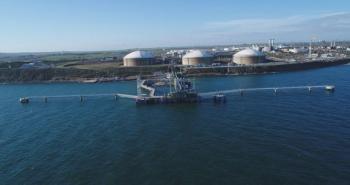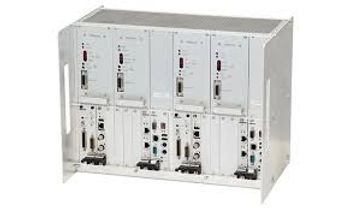
Steps to reduce compressor load consumption and maximize gas turbine flow
Gas turbine compressors consume most of the gas turbine’s output power. This is because air pressure and temperature at the compressor outlet is in the superheated range if converted to a steam table.
Reducing compressor outlet pressure and temperature above compressor outlet air saturation point reduces compressor air outlet pressure and temperature and therefore compressor load consumption, which improves gas turbine efficiency.
The reduction of compressor air outlet pressure and temperature above saturation point can be achieved by injection compressor at the last stationary stages only by high-pressure water.
Moreover, the mass of the injected high-pressure ambient temperature water into compressor at the last stationary stages leads to further enhancement to gas turbine efficiency.
Maximizing gas turbine flow is accomplished by raising the temperature of the injected high-pressure water up to compressor outlet air temperature saturation point. This maximizes gas turbine efficiency.
This method – injecting high-pressure water at compressor different stages – has some drawbacks, e.g., non-continuous during operation, blades erosion, weather conditions. But those risks are worth the reward. Here’s
First objective: reduce compressor load consumption by injecting high-pressure water at ambient temperature into the compressor at the final stage.
Step 1:
Since each turbine compressor has its own characteristics, calculate compressor outlet air pressure and temperature. For the sake of this demonstration, assume the compressor outlet air temperature is 547⁰K with a pressure of 12 bar.
Step 2:
To determine the steam table compressor outlet air condition, measure saturation temperature and degree of superheat. It can be seen from the steam table that compressor outlet air is in the superheated region.
For the above example saturation temperature is 465⁰K and degree of superheat is 547⁰K – 465⁰K = 82⁰K.
Assuming the compressor has a constant air outlet pressure of 12 bar, compressor outlet air temperature can be reduced by 82 degrees before saturation.
Step 3:
Calculate the targeted compressor outlet temperature, assuming a safety factor of 12 degrees. Therefore, the targeted compressor outlet temperature is equal to saturation temperature, plus the safety factor. This is to ensure that compressor air outlet temperature never reaches saturation point to avoid blade erosion.
For example, the targeted compressor outlet air temperature is 465⁰K + 12⁰K = 477⁰K.
Step 4:
The required mass of high-pressure water rate to be injected is calculated to reduce compressor outlet air temperature to the targeted temperature of 477⁰K.
This has two main advantages. For one, the injection of high-pressure water at compressor last stages tends to reduce compressor air outlet pressure and temperature. This results in reduced compressor load consumption and, hence, improved gas turbine efficiency.
The table below shows efficiency improvement up to targeted compressor outlet temperature.
T2 ⁰K 547 537 527 517 507 497 487 477
ɳad % 32 33 34 35 35 36 37 38
Moreover, the injected high-pressure water mass increases gas turbine total mass flow, leading to further increase in gas turbine efficiency.
The bellow efficiency equation shows that increases in turbine mass flow improves efficiency:
ɳ = 1-{ Ma(h2-h1) / Ma + Mw + Mf (h3-h4)}x100
Second objective: maximizing gas turbine mass flow
Maximizing gas turbine mass flow can be achieved by raising the temperature of the injected high-pressure water temperature from ambient temperature up to targeted compressor outlet temperature of 477⁰K.
The table below shows the relationship between increase in injected high-pressure water temperature (Tw) and increase of injected high-pressure water mass (Mw) in relation to compressor air mass flow (Ma).
Tw ⁰K 288 300 350 400 450 460 470 475 477
Mw/Ma 0.37 0.40 0.55 0.91 2.59 4.11 10 35 Infinity
At a temperature of 288⁰K, the mass of injected high-pressure water (Ma) required to reduce compressor outlet temperature to targeted temperature is 0.37 of atmospheric air (Ma) entering the compressor.
If the injected high-pressure water temperature is raised to the targeted temperature of 447⁰K, the mass of the injected high-pressure water can be raised up to infinity without water saturation or blade erosion. However, this is neither practical nor economical.
Invention implementations
- Modify compressor casing to admit high-pressure water injection pipework.
- Calculate number of high-pressure injectors.
- Install the required number of high-pressure injectors between blades.
- Incorporate means of control for high-pressure injection system and heat the high-pressure injection water into the compressor.
Newsletter
Power your knowledge with the latest in turbine technology, engineering advances, and energy solutions—subscribe to Turbomachinery International today.




